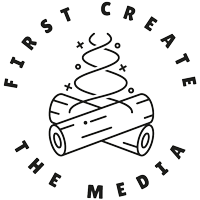Ever found yourself staring at content that doesn’t match your expectations or isn’t quite hitting the mark? You need a strong creative brief, explains Lauren Gray, Head of Creative at First Create The Media.
Whether you’re working with an in-house creative team or outsourcing to an external agency, one of the most crucial steps in any project is the creative brief. Why? Because no one is a mind reader.
We all know how frustrating it can be when you trust someone to create something for you and, for whatever reason, the final product is not what you had envisioned. Whether that something is a themed birthday cake, a new hairstyle or a thought leadership article for your biotech business, the underlying problem is often the same – it all comes back to the briefing process.
In this blog post, we cover why a great creative brief is critical, the challenges that arise from a poor brief, and how to write one that sets your project up for success. If you’ve ever found yourself asking, “How do I get the creative team to do what I want?” – this is for you.
Why does a good creative brief matter?
When the end product misses the mark, it’s easy to point the finger at the creative. Now, sometimes mistakes happen – perhaps your creative has gone awry and produced something completely off-piste or something has simply been lost in translation. However, more often than not, the issue starts much earlier in the process. The most common reason projects go off-track is a poorly written or unclear creative brief.
A weak brief can lead to:
- Miscommunication: When a brief lacks detail, it leaves too much room for interpretation.
- Wasted time: Ambiguous briefs usually result in several rounds of revisions and corrections, costing both time and money.
- Frustration on both sides: When expectations aren’t clear, creatives feel like they’re shooting in the dark, and clients are left unsatisfied. A lose-lose situation!
At FCTM, we’ve seen firsthand how a poor brief can derail even the simplest projects. For example, one person’s interpretation of a “fun” LinkedIn post could be very different to another. If you don’t nail down the details early on, and get really clear on what you want to achieve with a piece of content, the result is likely to be several additional hours of back-and-forth revisions. A clear brief helps to avoid this.
What does a good creative brief look like?
A great brief acts as a roadmap, giving your creative team the direction they need to bring your vision to life. Whether you’re briefing an in-house team or an external agency, there are some key elements that should always be included. The more specific you are, the better the final product will be (and the more it will align with your expectations).
Here are the essential components of a great creative brief:
1. Project overview
What is this project? Start with a clear and concise description of the project. This should be a brief 1-2 sentence summary of what the content is about. You should also include the content type (blog, thought leadership article, video) and channel (website, LinkedIn, email).
2. Objective
Why are you doing this? Comms and content should serve a purpose. Is the goal to educate your audience, drive leads, or increase brand awareness? Defining this upfront ensures the creative aligns with your business goals. Define your goal, key deliverables and say how it fits into your wider marketing strategy.
3. target audience
Who is this for? Be as specific as possible. In the life sciences, audiences might range from research scientists to healthcare professionals or investors. What’s their level of awareness around what you’re communicating? What challenges are they facing? One way to make sure your content is hitting the mark is to think about the questions your audience might have, and how your content can answer these questions.
4. key messages
What are the main takeaways? Clearly define the message or story you want the creative to convey. Try to stick to a small handful of core messages to avoid diluting your key point. What do you want the audience to come away with? Again, the key message should align with your overarching marketing strategy and messaging.
5. Tone and style
How should it sound and feel? Do you want the tone to be formal, conversational, or authoritative? Don’t assume the creative will “just get it.” Providing references – such as previous work you’ve liked (whether your own or not), or tone of voice guidelines – can help the creative team understand the desired style.
6. deliverables and deadlines
What are you expecting, and when? Specify exactly what assets are needed (e.g., a written piece, social media posts, infographics) and when they are due. For longer projects, setting the timeline for reviews and revisions at the outset is a great way to avoid delays later down the line.
7. Brand and editorial guidelines
Any existing rules? If you have brand guidelines – fonts, colours, logo placement, etc. – make sure to share them upfront. This helps maintain consistency across all your communications.
Tips for giving a clear creative brief
While the list above will help you decide what to include in your brief, here are some tips to help you fill in the details.
- Start with the end in mind: Defining your objective and audience first will help you filter out irrelevant details and focus on what matters most.
- Involve stakeholders: If your project involves multiple departments (e.g., sales, R&D, marketing), gather input from these stakeholders before writing the brief. This ensures that all the necessary perspectives are aligned before the creative work begins.
- Be clear and concise: Creative briefs should be detailed but to the point. If you find yourself writing multiple pages, it’s likely your objective and key message need honing.
- Invite questions: After delivering the brief, make space for the creative team to ask clarifying questions. This reduces the risk of misinterpretation.
- Stay flexible: Sometimes, a creative team might have ideas that go beyond what you envisioned. Be open to these suggestions! They could make the project even stronger.
It should now be clear why a great brief is so important to the creative process. It bridges the gap between what you want and what your creative team delivers, minimising confusion, wasted time, and frustration. By investing time in crafting a thoughtful brief, you’ll ensure everything runs smoothly and you’re left with a great final product.
At FCTM, we position growing bioscience innovators and initiatives as credible pioneers and leaders in their field — and we’re well-versed in the art of creating and interpreting briefs. Get in touch if you have a comms project that’s ready to be put into action, or need help setting the creative brief for what you should be doing next.

